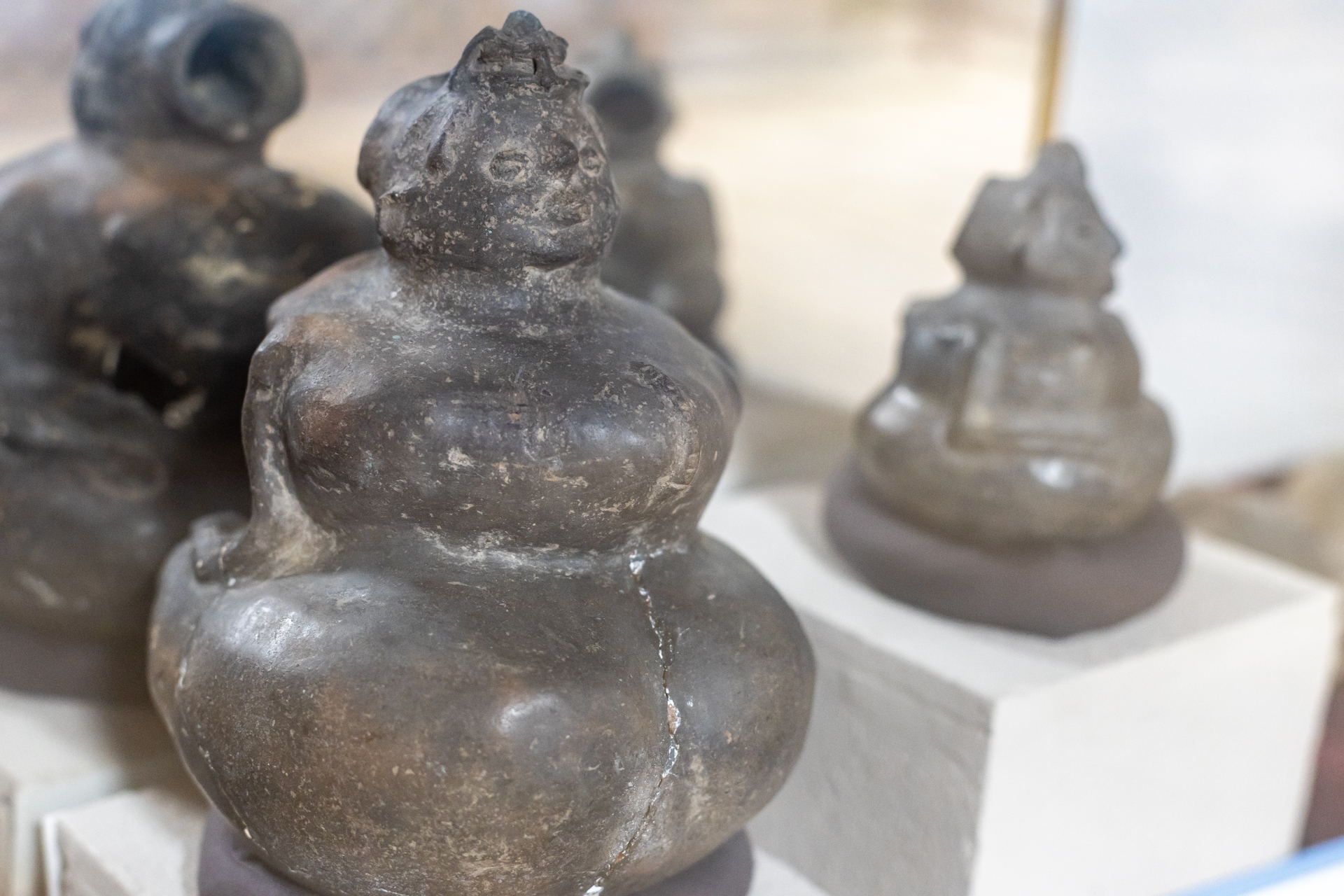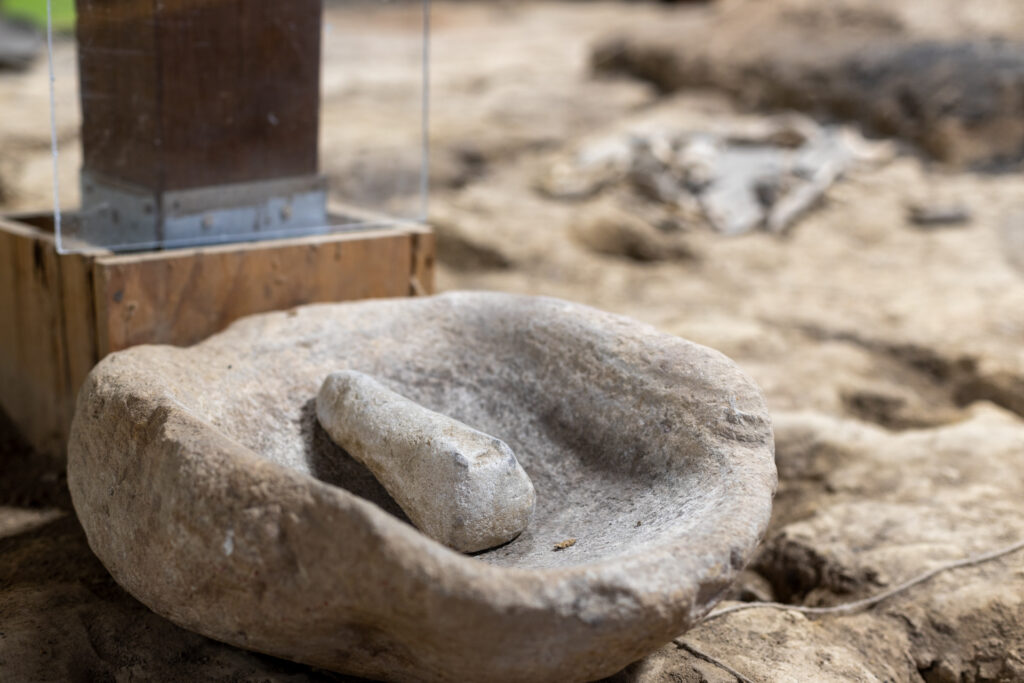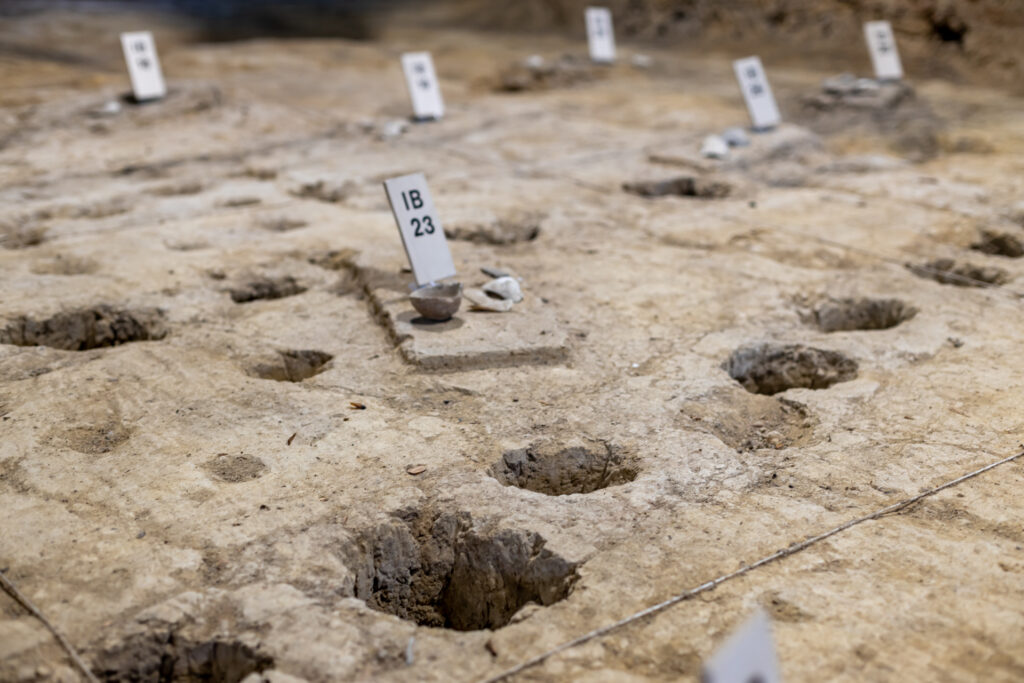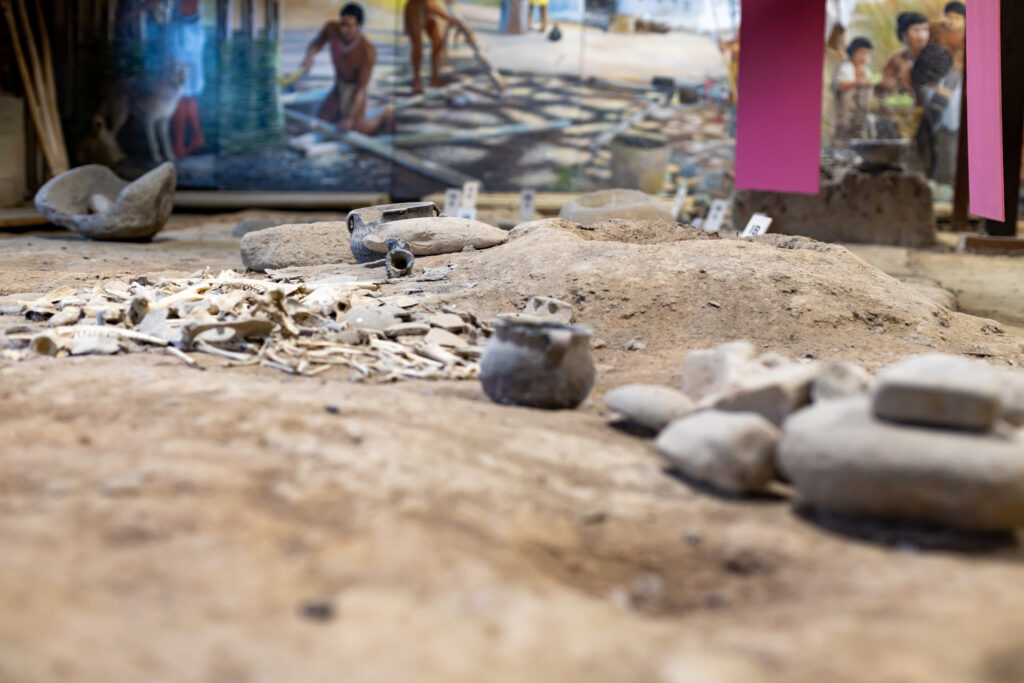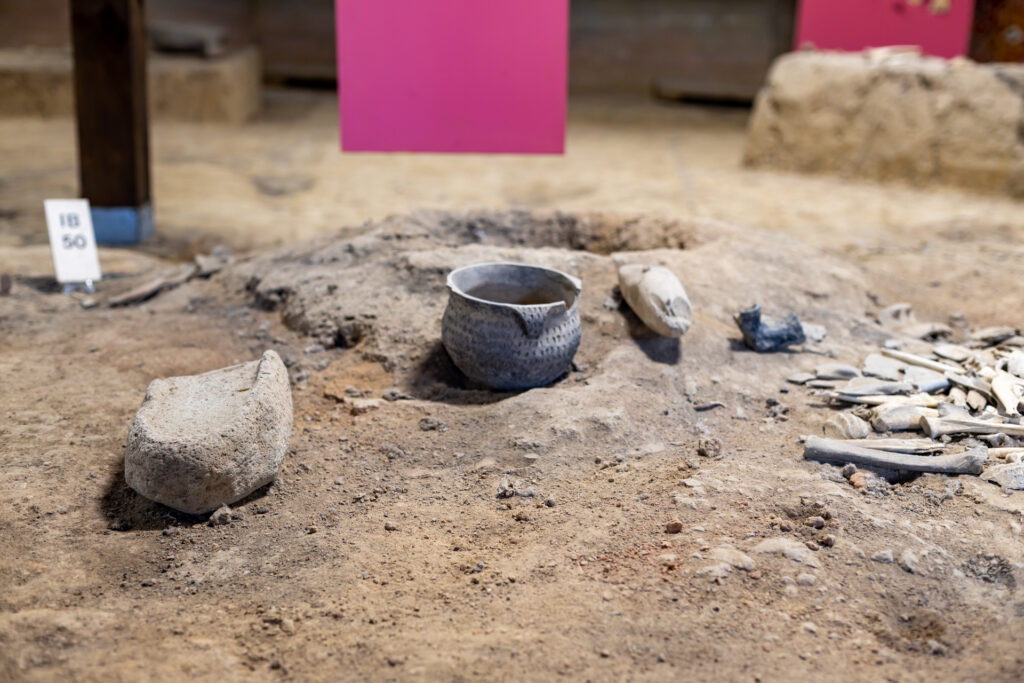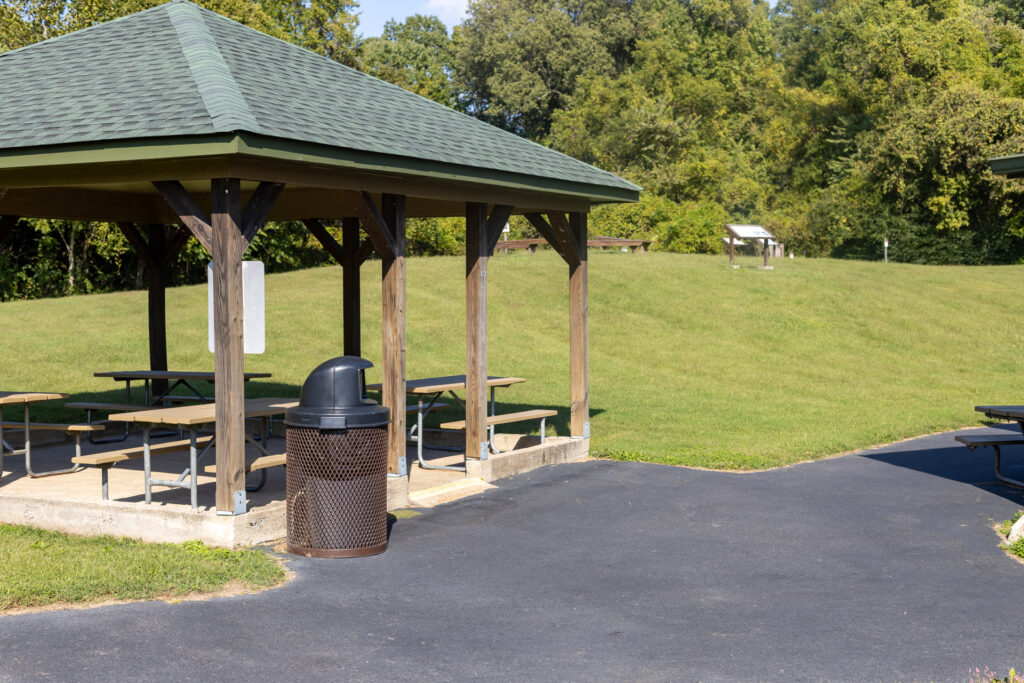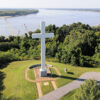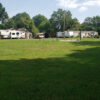Nearly 1,000 years ago, Native Americans settled on a large hill overlooking the confluence of the Ohio and Mississippi Rivers. With no writings, the history of the people is not well understood. In fact, we don’t even know what they called themselves.
In this part of the country, many other prehistoric sites are similar in nature. With no idea of their namesake, historians refer to them as “people of the Mississippian culture. “ These Native Americans were located on this site during the years of circa 1000 to 1350. No one knows why they left.
The site features two large platform mounds and at least eight smaller mounds located around a central plaza. The mounds served different functions, including ceremonial, residential, and burial. Although it isn’t known exactly how many people lived here during the 250 years, experts suggest the number to be in the hundreds.
History of Excavations & Ownership
Excavations of the site in 1932 by Fain King, an amateur archaeologist, revealed numerous artifacts and bones. Seeing an opportunity as a tourism destination, and to make money, he erected buildings on top of the mounds. He displayed the “millions” of artifacts excavated, even some of the skeletal remains for visitors to see.
An advertisement in the Dec. 11, 1932 Paducah Sun-Democrat claims “140 burials uncovered in original position with pottery, etc.” and “3 ceremonial or sacrificial alters—charred and burned building”. The admission fee was 50 cents.
King referred to his new venture as Ancient Buried City. Newspaper articles from the 1930s refer to it as a major tourism attraction for this region, with one stating 20,000 vehicles visited the site in 1937.
King and his wife operated the site until 1946. Another article appearing in the Feb. 24 edition of the Paducah Sun-Democrat reports the Kings were looking the sell the 25-acre Ancient Buried City for $400,000 (or $5.7 million in 2021 dollars) due to Mr. King’s poor health. The article states 40,000 visitors came to the site annually.
Later that year, the Kings donated the site to West Kentucky Baptist Memorial Hospital as a fundraising effort to build a new facility in Paducah. The Kings were to receive an annuity with the profits benefiting the hospital.
After Mrs. King’s death in 1983, the hospital donated the site to Murray State University. MSU students carefully continued to research the mounds with Director Dr. Kit Wesler overseeing. Additional studies revealed new clues about Wickliffe Mounds.
In 2004, MSU transferred the site to the state with the Kentucky Department of Parks taking control. It was designated the Wickliffe Mounds State Historic Site. A museum and “Lifeways Building”, which is situated on the residential mound, displays the ancient artifacts found.
In 2011, the remains excavated at the site were reburied with oversight of the Chickasaw Nation, who owned the lands prior to Jackson’s Purchase in 1818.
The site today is one of the most prominent archaeological sites in the Four Rivers Region.
What To Experience at Wickliffe Mounds
The Lifeways Building was constructed on top of Mound D, which is understood to be the village/residential part of the mounds complex. Inside, there are hundreds of artifacts and extensive information about the site. You can see pottery, stone tools, arrowheads and much more.
Post holes and infant grave sites are scattered throughout the earthen floor. The number of child burials there is somewhat staggering, with dozens of graves unearthed decades ago.
Historians say about three out of every ten Mississippian culture children died at birth or shortly afterwards. On average, women lived only to about 35, with men making it to 42.
History-lovers could spend quite a bit of time inside the Lifeways Building learning about the Mississippian culture and the importance of Wickliffe Mounds. There are tons of exhibits and informative signs explaining what everything is and its relevance to those prehistoric times.
Dr. Wesler has written extensively about Wickliffe Mounds in his book Excavations at Wickliffe Mounds if you would like to read more about this amazing site.
Want to Visit Wickliffe Mounds?
Wickliffe Mounds is open seasonally from April to mid-November. For the latest hours and information on admission fees, visit their site.
The park features a Woods Walk Trail which is about 200 yards of interpretive signs regarding birds, trees and other wildlife at the site. There’s also picnic tables and groups of people are welcome. Tours and educational programs are available by advance reservation.


